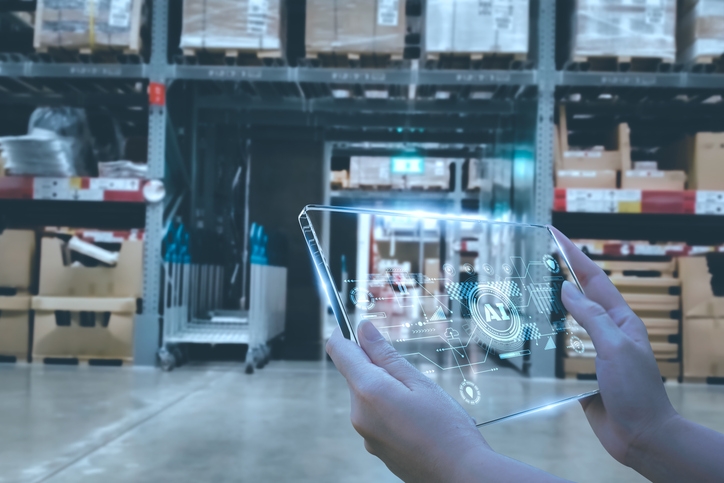11 Event Logistics Steps That Save Time, Reduce Costs, and Keep Your Crew On Track
Optimize your volunteer efforts with our essential guide. Learn practical tips and strategies to enhance your logistics for successful events. Read more!

How to Manage Event Logistics: A Complete Guide for Event Organizers
In today’s complex event landscape, effective logistics planning is the backbone of successful events. Whether you're organizing a local promotional event, a multi-city product tour, or an international conference, mastering event logistics means more than moving equipment from Point A to Point B—it requires seamless coordination of people, processes, and resources.
This complete guide covers everything event organizers need to know, from staffing levels and crew management to international freight and real-time updates. By the end, you’ll be equipped to streamline your event operations, reduce labor costs, and ensure service quality across every touchpoint.
What Is Event Logistics (and Why It’s the Backbone of Smooth Event Operations)?
Event logistics refers to the end-to-end coordination of all the physical, human, and digital resources required to execute an event smoothly, from venue setup and transportation to staffing and on-site operations. It ensures that every aspect of an event is delivered with precision, reliability, and optimal use of resources.
In practical terms, managing event logistics means planning and orchestrating not just “where things go,” but how people move, how materials arrive, and how teams communicate in real time. Done right, it enables organizations to enhance service quality, minimize risk, and deliver seamless event experiences.
Key Components of Event Logistics
- Venue Setup & Teardown: Layout planning, seating configuration, signage, power, Wi-Fi, and post-event dismantling
- Event Staffing: Recruiting, assigning, and managing event professionals, volunteers, and crew members to ensure optimal coverage
- Transportation & Freight: Coordinating vendor deliveries, booth materials, international shipments, and ensuring accurate commercial invoices for customs clearance
- Crew Scheduling & Coordination: Assigning shifts, preventing scheduling conflicts, and using management software to track availability and ensure smooth operations
- Inventory & Equipment Tracking: Monitoring AV gear, furniture, badge printers, charging stations, and other critical materials in real-time
- Health, Safety & Compliance: Managing crowd control, emergency procedures, permits, insurance, and verifying vendor certifications for business continuity and event success
Tip: For events involving cross-border shipping, align logistics with customs regulations early on to avoid clearance delays.
11 Proven Steps to Streamline Event Logistics
1. Pre-Event Logistics Planning: How to Set Up Your Team, Vendors, and Timeline for Success
Your event’s success is built long before doors open. Pre-event logistics ensure everything from vendor drop-offs to crew coordination is set in motion early—reducing chaos and costly delays.
Key Priorities:
- Finalize Your Timeline- Include setup, tech checks, rehearsals, and buffer windows for unexpected delays.
- Coordinate Vendor Logistics- Confirm delivery windows, loading zones, insurance, and access credentials. Assign a point person for vendor check-ins.
- Assign Crew & Volunteers Early- Use scheduling tools to manage availability, roles, and shift confirmation. Avoid double-bookings and enable last-minute changes.
- Share Training in Advance- Distribute onboarding materials, safety protocols, and area assignments before the event day.
- Test Tech Systems- Run checks on registration platforms, Wi-Fi, mobile apps, and AV gear at least 2–3 days before setup begins.
- Verify Permits & Access- Confirm all legal documents, insurance, and venue access passes are secured and distributed to the right people.

2. Event Staffing & Crew Management: How to Build a Reliable Team Using the Right Tools
When it comes to successful events, event staffing and crew management becomes very critical. It's not just about having “enough people”—it's about ensuring each person is trained, available, and assigned to the right task at the right time.
Whether you're collaborating with an event staffing agency, hiring volunteers, or managing your internal event crew, you need systems that help you manage labor costs, avoid scheduling conflicts, and improve staff satisfaction, all while delivering a top-tier attendee experience.
Key Execution Strategies
- Use historical data to forecast staffing needs: Analyze employee hours, previous staffing levels, and demand fluctuations to predict the optimal number of crew members for different roles in future events.
- Avoid scheduling conflicts with intelligent software: Utilize modern crew management systems that automatically detect when team members are double booked or unavailable for certain shifts.
- Build flexibility into your schedule: Equip your team with mobile apps that allow for real-time updates, last minute adjustments, and dynamic reassignments. This is critical during high-pressure events with tight project timelines.
- Assign crew based on project-specific skills: Advanced tools can match staff to specific projects based on skill sets, shift availability, past performance, and certifications—ensuring a perfect fit for each assignment.
3. Volunteer Logistics: Assignments, Communication & Onboarding Done Right
Volunteers are essential to the success of nonprofit, community, and promotional events—yet managing them effectively requires more than just a sign-up form. From training and communication to ensuring the right assignments for each volunteer, great volunteer logistics directly impact the professionalism and energy of your event.
Best Practices for Volunteer Logistics Management
- Group volunteers by skill level and assign tasks strategically: Avoid mismatched assignments by categorizing volunteers according to experience, interests, or specific qualifications. This ensures that everyone is a perfect fit for their responsibilities.
- Share relevant information in advance: Send schedules, onboarding material, and task details well before the event. A good management software platform can automate this to save time and reduce confusion.
- Use mobile apps for communication and shift changes: Enable volunteers to manage available shifts, request shift swaps, and receive real-time updates. These tools minimize last minute changes and make it easier to coordinate a large group efficiently.
- Ensure smooth training access: Use platforms that house digital training content and make it accessible in-app or online. This reduces your reliance on in-person briefings and ensures consistent messaging.
Pro Tip: Well-organized volunteer logistics don’t just streamline the day—they also reduce labor costs, improve staff satisfaction, and help your whole team operate with greater confidence.
4.Crew Scheduling and Shift Management: Prevent Last-Minute Chaos with Smart Planning
One of the most common challenges in event logistics is schedule changes—crew calling out, overlapping shifts, or an unexpected surge in attendees. The key to avoiding last-minute chaos is implementing a robust crew scheduling process that gives you visibility, flexibility, and control.
Essentials for International Event Logistics:
- Use ATA Carnet or temporary import documents
These simplify customs clearance and help avoid import duties for equipment or materials you’ll re-export after the event. - Prepare accurate commercial invoices
Ensure each invoice includes item values, harmonized tariff codes, and detailed descriptions—critical for smooth customs processing. - Ensure complete documentation
Include all necessary paperwork like packing lists, certificates of origin, and customs declarations. Incomplete documents can delay or block entry. - Work with experienced freight partners
Partner with logistics vendors who specialize in border security and international customs. Their expertise helps clear customs efficiently and avoids surprises.
Smart scheduling platforms now offer additional features like automatic compliance checks, shift reminders, and reporting tools to measure effectiveness post-event.
Case Study:
A top European event company improved operational efficiency and reduced labor costs by 23% after switching to a jobs-based scheduling system that allowed for last-minute shift notifications and streamlined team coordination across multiple client projects.
5. Vendor & Venue Logistics: How to Align Expectations, Access, and Delivery Windows
Vendors and venues are critical to event success—but without clear roles, regulations, and communication, things can unravel fast. Effective vendor logistics protect your timeline, service quality, and crew coordination efforts.
Execution Checklist:
- Clarify Vendor Responsibilities- Set expectations for setup times, booth space, service hours, and teardown deadlines.
- Confirm Venue Requirements- Double-check power capacity, Wi-Fi setup, loading zones, and fire safety compliance. Ensure all vendors follow the venue’s operational guidelines.
- Assign a Logistics Lead- Designate one event crew member to manage vendor flow, handle delays, and act as the single point of contact on event day.
- Track Deliveries in Real Time- Use QR codes, RFID, or mobile inventory tools to monitor vendor materials and equipment as they arrive.
- Secure Insurance & Access- Collect vendor insurance certificates and confirm site access for external crew members and drivers.
- Create a Cross-Team Communication Plan- Maintain open channels between venue staff, vendors, and your event crew to handle schedule changes or emergencies.
6. International Freight, Customs & Transportation: Get Shipments Cleared Without Delays
When your event spans borders, event logistics become more complex, and more critical. Whether you're shipping booths, branded merchandise, or audiovisual equipment, understanding how to navigate international freight, border security, and customs clearance is key to avoiding delays.
Essentials for International Event Logistics
Pro Tip: Schedule freight shipments to arrive 10–14 days before the event. This buffer accounts for inspections, customs holds, or holiday-related delays, keeping your timeline intact.
Recommended Reading: How to Handle International Event Logistics Like a Pro
7. Coordinating Multi-City or Global Events: How to Keep Your Whole Team in Sync
As your events scale across cities or countries, team coordination becomes even more critical. Without centralized communication, the risk of missing important information, mismanaging assignments, or breaking local regulations increases dramatically.
Execution Tips for Multi-Location Event Coordination
- Partner with local DMCs or crew agencies:
Local Destination Management Companies (DMCs) provide insider knowledge on permits, vendors, and regulations—crucial for maintaining service quality and legal compliance. - Plan around time zones and regional nuances:
Schedule check-ins and project timelines considering local holidays, daylight saving time, and working hours. This avoids confusion and improves responsiveness. - Centralize critical data in one system:
Use a unified event management software that stores crew assignments, location-specific notes, and key contact information in one place. This helps ensure the whole team works toward the same objectives—no matter where they are.
Benefits: Smooth cross-location coordination leads to better resource management, improved operational efficiency, and ultimately, greater event success.
Recommended Tool: Azavista’s All-in-One Logistics Management Suite
8. Managing Equipment, Materials & Onsite Setup: Stay On Schedule and Avoid Bottlenecks
Smooth event execution starts long before the attendees arrive. From staging and signage to sound systems and lighting rigs, managing equipment, materials, and onsite setup efficiently ensures your team hits the ground running—without unnecessary stress.
Onsite Logistics Checklist
- Track deliveries with automated alerts
Use systems that send real-time updates to your entire team when essential equipment arrives—keeping everyone aligned and minimizing confusion. - Assign crew based on equipment expertise
Match event crew members with tools or materials they’ve worked with before to improve setup speed and reduce the risk of errors. - Prepare for last-minute changes
Always have a backup plan—such as alternate transport vendors, extra cables, or a second AV provider—to handle unexpected schedule changes or equipment failures. - Use mobile checklists for staff readiness
Deliver important information like unloading zones, setup procedures, or safety protocols directly to crew phones via mobile apps—ensuring everyone starts their shift fully informed.
Pro Tip: For large-scale setups, designate a setup captain for each area (e.g., registration, stage, vendor booths) to assign tasks and manage time-sensitive decisions onsite.
9. Technology That Powers Event Logistics: Tools Every Organizer Should Use
In today's fast-paced environment, event professionals need more than walkie-talkies and spreadsheets. The right management software streamlines everything from crew scheduling to equipment tracking, enabling organizations to make faster, smarter decisions.
Must-Have Technology Features
- Mobile app access for crew and managers
Keeps everyone connected on the go—ideal for last-minute changes, shift updates, or emergencies. - Crew coordination dashboards
Visualize who’s working where, prevent double booked shifts, and fill staffing gaps in real time. - Shift assignment and event staffing tools
Quickly allocate available shifts based on skills, employee hours, and specific event projects. - Real-time updates and alerts
Keep your team instantly informed of delayed deliveries, venue changes, or role reassignments—minimizing confusion and downtime. - Integration with HR and payroll systems
Ensure accurate compensation, attendance tracking, and simplified labor cost management—all in one place. - Role-based access and data control
Share only relevant information with each crew member, HR manager, or client to improve focus and data security.
Tip: Looking for an all-in-one platform? Azavista’s event logistics suite includes powerful crew management, task assignment, and mobile app features built for real-world event challenges.

10. Overcoming Common Event Logistics Challenges: Tools and Strategies That Work
No matter how meticulously you plan, live events come with moving parts—and unpredictable variables. The key is not to avoid challenges entirely (that’s unrealistic), but to anticipate them early and have smart countermeasures in place.
Common Event Logistics Issues & How to Solve Them
Common Event Logistics Challenges & How to Solve Them
- Last-minute schedule changes
Use flexible staffing platforms like When I Work or Deputy that support real-time shift swapping and mobile alerts. Set up contingency rosters for peak hours to ensure crew members are always available. - Rising labor costs
Analyze historical event data to forecast optimal staffing levels. Prevent overstaffing by assigning shifts based on attendance trends and the complexity of individual tasks. - Miscommunication among teams
Deploy centralized crew management software with push notifications and real-time updates (e.g., Azavista or Hub Planner). Keep everyone aligned with synced dashboards and shared task lists. - Delays in equipment delivery or setup
Build a 10–15% buffer into your project timeline. Maintain relationships with backup vendors or rental partners to handle last-minute needs and avoid event-day disruptions. - Volunteer no-shows or dropouts
Create a pool of on-call volunteers or assign backup personnel for critical roles. Use platforms like SignUpGenius to reassign slots and send broadcast notifications quickly.
Tip: After every event, run a quick retrospective. Identify recurring friction points and update your logistics playbook so your next event runs even smoother.
11. Post-Event Logistics: How to Wrap Up Efficiently and Improve for Future Events
Post-event logistics go far beyond teardown. This is your moment to close out operations smoothly, retain key data, and improve crew management and service quality for future events.
Essential Wrap-Up Steps:
- Execute a Strike Plan: Coordinate teardown, vendor exits, and inventory retrieval efficiently to avoid delays and venue penalties.
- Return Rentals and Unused Materials: Schedule the return of rented gear, unsold merchandise, and leftover promotional items.
- Log Employee Hours and Assignments: Close out tasks in your crew management software to ensure accurate reporting and prevent scheduling conflicts for future events.
- Host a Team Debrief: Gather crew members and event professionals for a structured debrief. Review what went well, where breakdowns occurred, and how processes can improve.
- Capture Lessons Learned: Identify staffing gaps, training needs, and logistical bottlenecks. Use this data to refine assignments and planning workflows.
- Archive All Critical Docs: Digitally store contracts, commercial invoices, permits, insurance certificates, and freight documents in your event logistics system for future access.
Final Thoughts: Why Smart Event Logistics Leads to Better ROI and Staff Satisfaction
Whether you're organizing a corporate product launch, a nonprofit gala, or a multi-city roadshow, flawless execution hinges on well-managed event logistics.
It’s not just about transporting goods or assigning shifts—logistics determines whether your staff shows up on time, your equipment is where it needs to be, and your guests have the seamless experience you promised.
Why Logistics Is the Real MVP of Event Execution
- Operational efficiency: Reduces delays, confusion, and rework.
- Optimal coverage: Ensures the right people are in the right place at the right time.
- Staff satisfaction: Fewer surprises and better preparation leads to happier, more productive teams.
- Cost control: Smarter scheduling and inventory management lowers labor and overhead costs.
- Consistent quality: Better logistics equals better attendee experiences—every single time.
Remember: Event planning sets the stage. Event logistics runs the show. Investing in the right processes, tools, and preparation ensures your team can rise to any challenge—delivering professional, high-impact experiences that make your brand unforgettable.
Looking to scale operations across multiple events and cities?
Explore how Azavista’s event logistics tools help organizations optimize staffing, coordination, and scheduling from a single dashboard.
More Event Management












